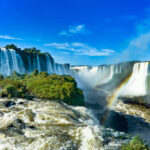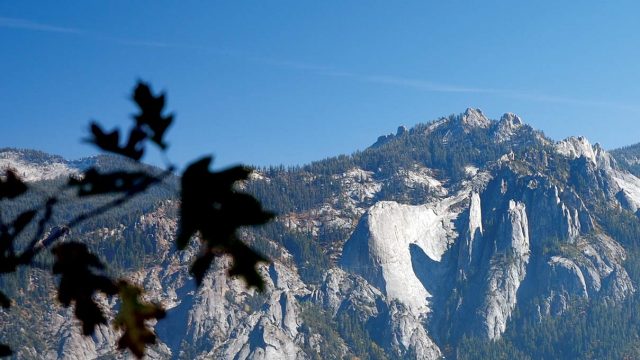
The Stories Behind our National Monuments
By Tauck
What’s the difference between America’s national parks and national monuments? Storied sites all, both share tales of treasured sights in public lands protected for the enjoyment of generations of visitors.
Designated by a legislative act of Congress, our national parks are areas of natural beauty, federally conserved due to their scenic, inspirational, educational, and recreational value. National monuments are established by presidential proclamation to preserve a place of historical, cultural or scientific interest.
There are currently 133 national monuments throughout the United States, a number which can change with each new president under the 1906 Antiquities Act which gives the president the sole authority to designate and protect federal lands and resources quickly. We shine a spotlight on three of them here, giving you a glimpse of the stories behind these popular monuments.
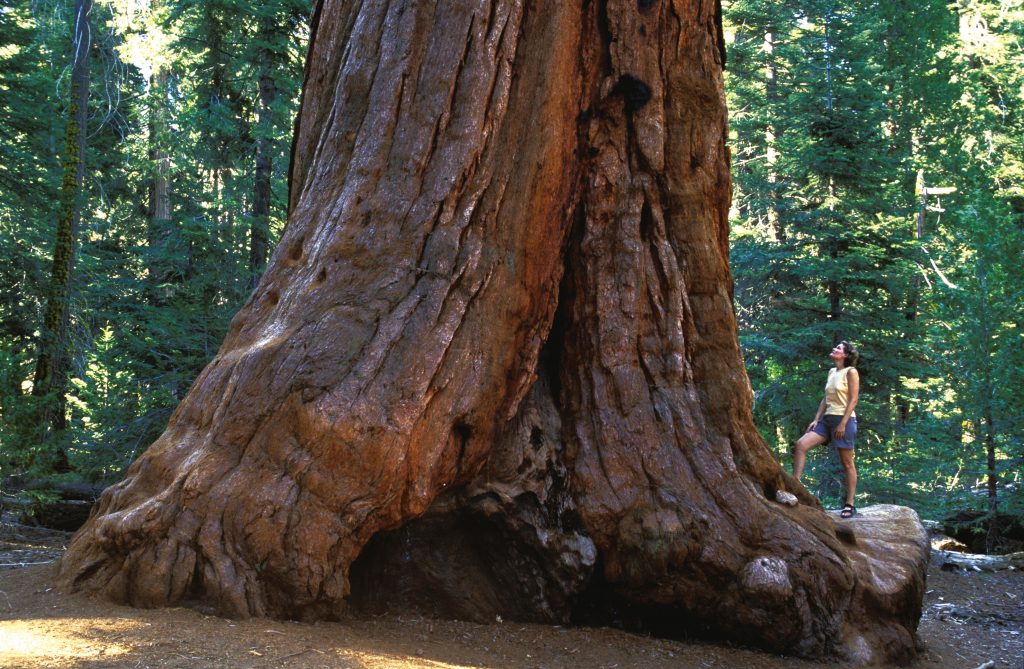
Photo courtesy of Tauck
Protecting the noblest tree species in the world
In 1908, President Roosevelt declared Sequoia National Forest a protected landscape, where giant sequoias some 3,000 years old and 300 feet high, lay claim to being the oldest living and largest trees on Earth. The trees live in only about 70 native groves in the middle elevations of the Sierra Nevada and have a history that dates back 10,000 years.
Naturalist John Muir was enamored of the big trees from the moment he first saw them in 1868, calling them Nature’s forest masterpiece and the greatest of living things, and vowing to protect them after seeing loggers fell them indiscriminately. He wrote, “No description can give any adequate idea of their singular majesty, much less their beauty. The great age of these noble trees is even more wonderful than their huge size, standing bravely up, millennium in, millennium out, to all that fortune may bring them. God has cared for these trees, saved them from drought, disease, avalanches, and a thousand tempests and floods. But he cannot save them from fools.”
While the ancient Sequoias have been federally protected since the establishment of Sequoia National Forest in 1908, thanks to John Muir and President Roosevelt, it wasn’t until April 2000, under the direction of President Bill Clinton, that all the giant sequoia groves within the forest boundary were declared a national monument.
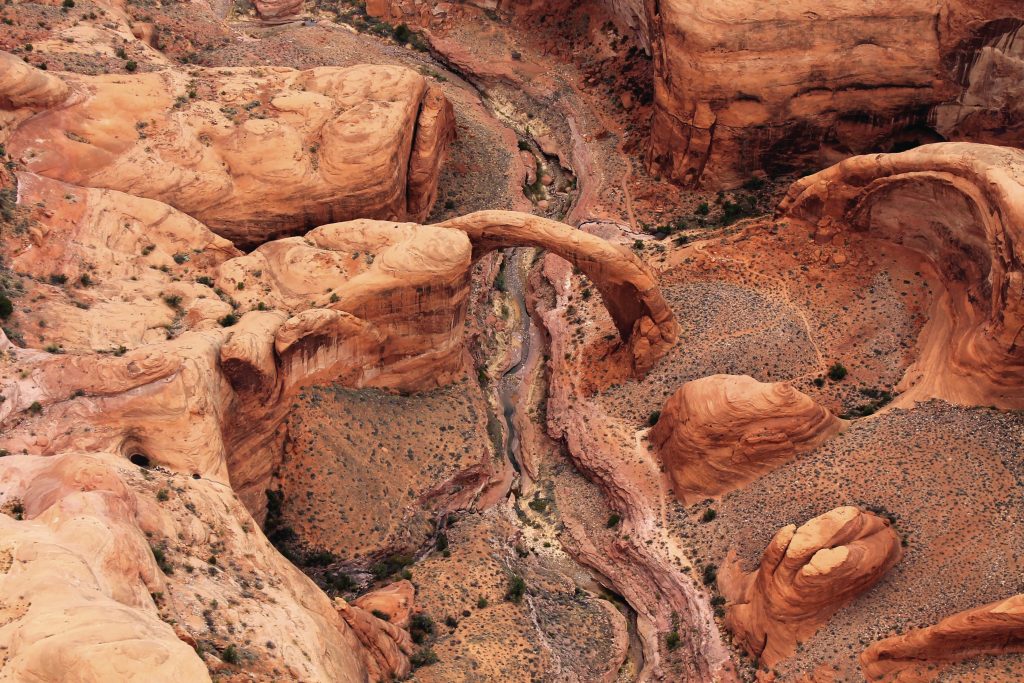
Photo courtesy of Tauck
Immortalizing a sacred rainbow of stone
President William Howard Taft declared Utah’s Rainbow Bridge a national monument in 1910 as a site of geological and cultural importance. A naturally sculpted sandstone arch standing 290 feet tall and 270 feet wide on the edge of Lake Powell, Rainbow Bridge is revered as a sacred place by the tribal people who live in the region, inspiring origin stories, ceremonial rites and pilgrimages dating back thousands of years and still relevant today. Its name is said to have originated from the Puebloan people’s name for it, Nonnezoshe, which translates to “rainbow turned to stone.”
Up until the early 1950s, the site was only accessible after an arduous multi-day hiking and rafting adventure into the wilderness, keeping all but the daring at bay. Much to the chagrin of the Navajo who still pray for rain and conduct ceremonies here, the construction of the Glen Canyon Dam made it easier for travelers to get to it by boat and a one-mile walk. While visitors today can view Rainbow Bridge on a flightseeing excursion, those who visit on foot are asked to treat it respectfully and honor its role in the on-going religious ceremonies of the Navajo. As the locals will tell you, the true significance of Rainbow Bridge extends beyond the obvious, standing as a bridge between cultures.
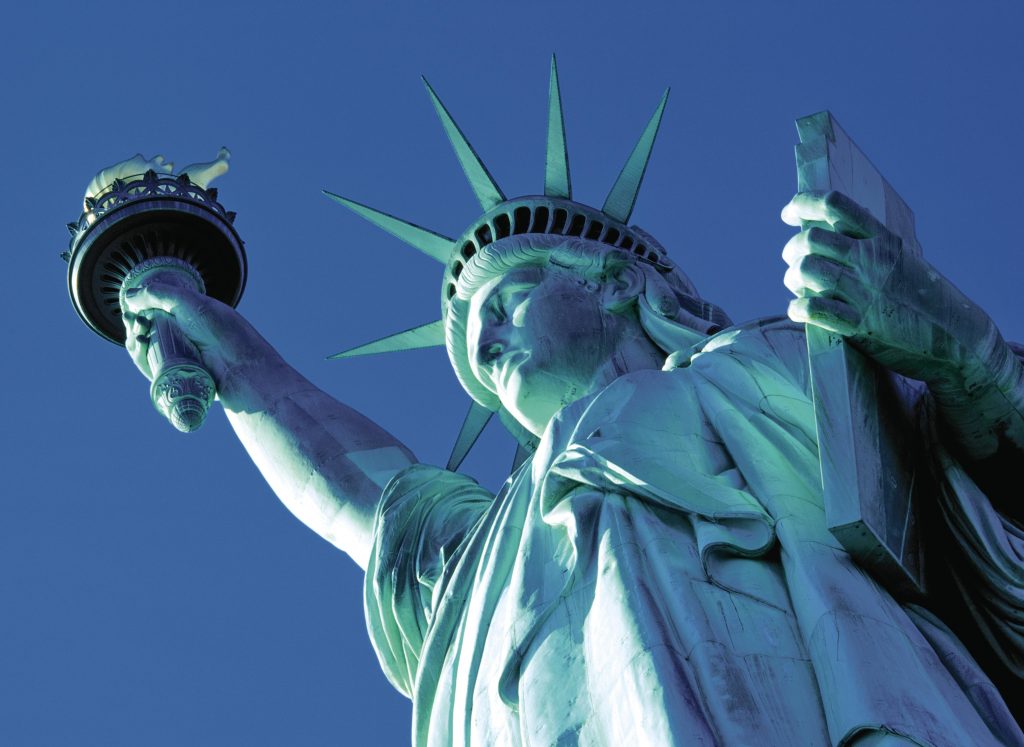
Photo courtesy of Tauck
Where freedom rings: The Statue of Liberty
A gift from France, she stood as a symbol of hope and refuge for generations of immigrants on Liberty Island in New York City harbor since 1886. During the dedication ceremonies of the Statue of Liberty, President Cleveland vowed “We will not forget that Liberty has here made her home; nor shall her chosen altar be neglected.” He made those works into an official promise as he declared the Statue of Liberty a national monument in 1924 protecting the shared ideals of our nation and the one that gifted her to us. Learn more about the stories behind Lady Liberty from documentary filmmaker Ken Burns by watching The Statue of Liberty, available on PBS.
To visit these monuments in person is to stand with the visionaries who protected them just for this moment, gifting you a chance to become part of the stories that memorialize them.
About Tauck
Celebrating its 100th anniversary in 2025, Tauck is a world leader in upscale guided travel, with more than 150 land tours, safaris, river cruises, small ship ocean cruises and family travel adventures to 70+ countries and all seven continents. In each of the last 26 years, Tauck has been honored in Travel + Leisure magazine’s annual “World’s Best Awards” celebrating the very best in luxury tours, cruises, hotels and more.
Posted in:

